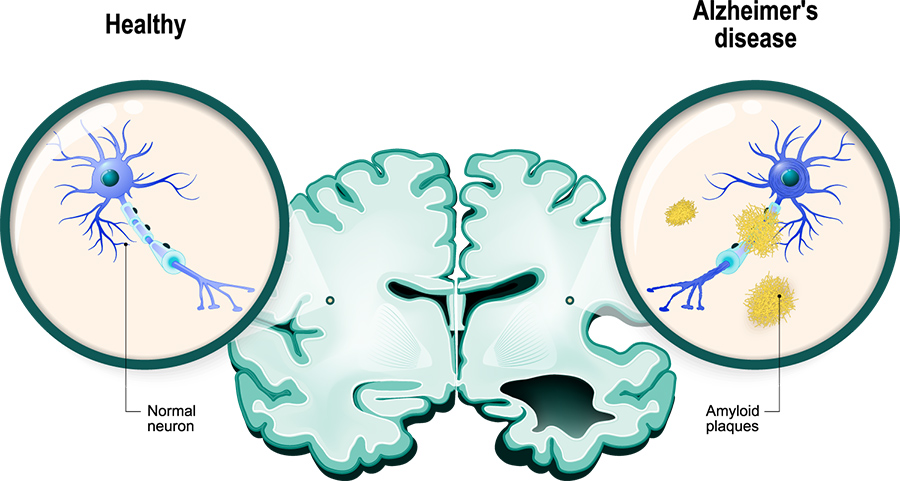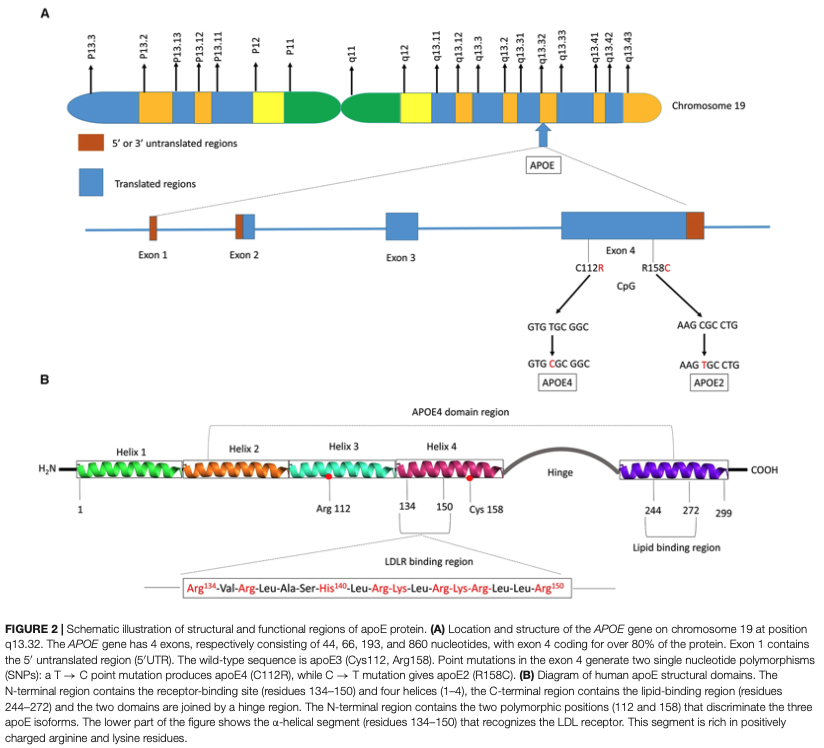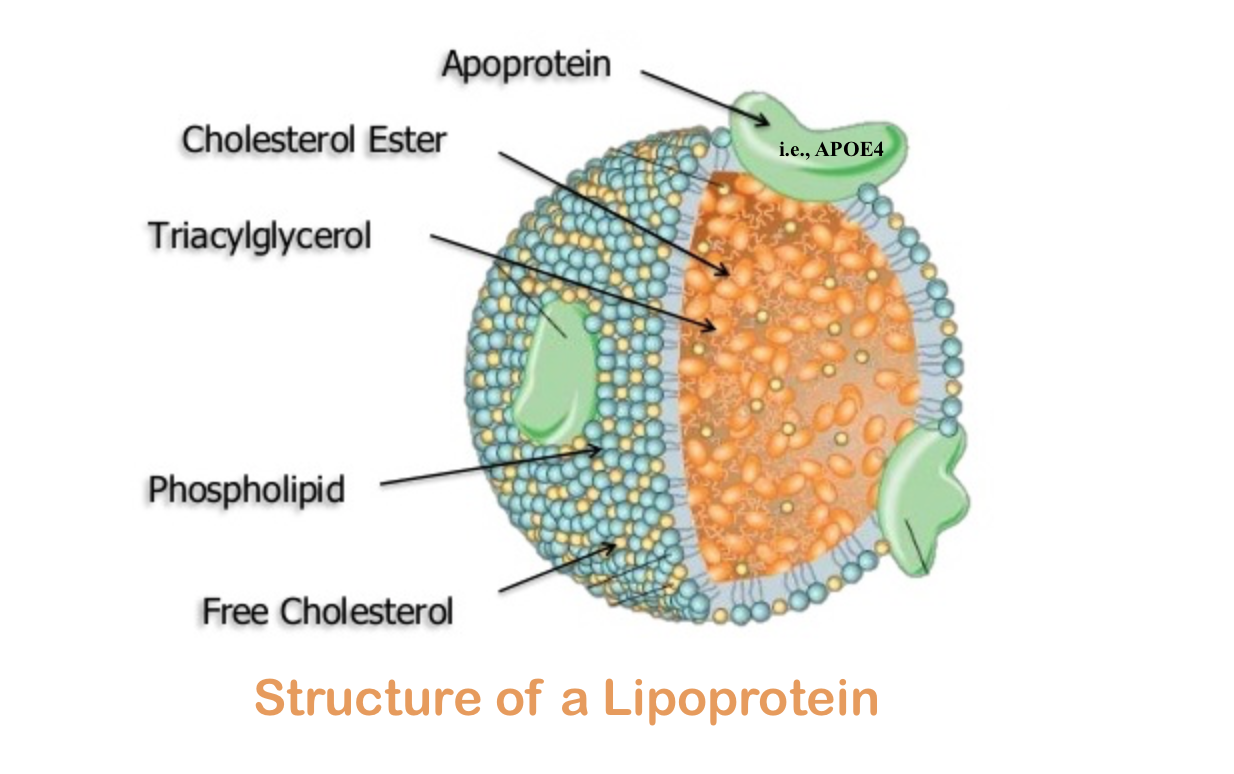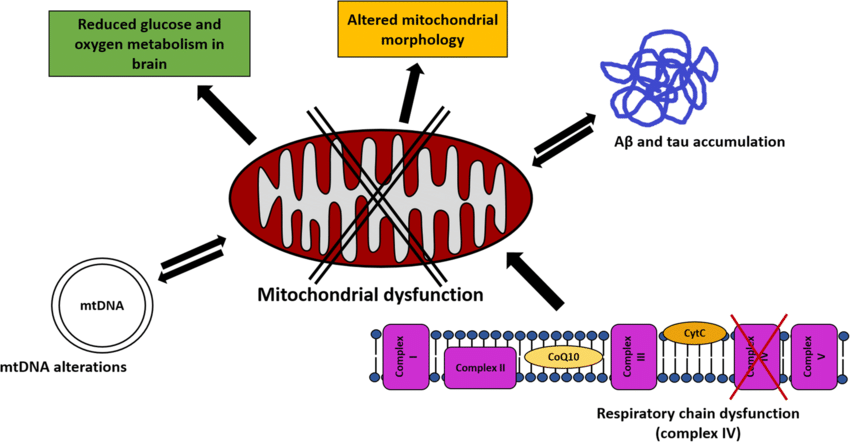
Alzheimer’s disease (AD) is a neurodegenerative disease that emanates within the brain, which over time, dramatically lowers the patient’s quality of life.1 Furthermore, it is predicted that the number of AD patients will double in the next 20 years. Therefore, early and accurate diagnosis of AD is paramount before said condition worsens.1(2959) One means of predicting AD is through the presence of a gene known as APOE4. The following will explore said gene, its function, and relationship to AD.

Many disorders can lead to cognitive decline, of which AD is considered the most prevalent.2 AD is characterized by both clinical changes (i.e., cognitive deterioration) and structural changes such as the deposition of beta-amyloid plaques and hyperphosphorylated tau tangles within the brain.2(1) As an aggregate, such qualities help define the presence and degree of AD, especially early-onset AD (EOAD).2(1)

Research has indicated that an apolipoprotein E gene within chromosome 19, also known as the APOE gene/ApoE protein, has several polymorphic forms: APOE2, APOE3, and APOE4.2(2) Safieh et al2(2) stated that individuals who carry APOE4 are more likely to develop AD. Furthermore, and most interestingly, the cognitive alterations amongst APOE4 carriers developed several years earlier, with a dose-dependent effect.2(2)

APOE2 carriers have an almost protective effect when compared to APOE3 and APOE4 variants; APOE4 protein, according to the researchers, appears to exert a toxic effect, whereas APOE2 tends to become protective against AD.2(2)Such knowledge is relevant since APOE4 has been implicated in several physiological processes to include interactions with beta-amyloid plaque, in addition to inducing an effect upon lipid metabolism and inflammation.2(2)

The APOE4 lipoprotein is synthesized primary in the liver. However, it is also produced in the brain and serves many functions, of which some could be related to AD. APOE lipoproteins, in the brain, and similar to the rest of the body, serves to transport lipids and maintain cholesterol homeostasis. APOE, which is the brain’s most prevalent lipoprotein, is associated with cholesterol and phospholipids, such as high-density lipoprotein (HDL) particles that play a key role in the distribution and recycling of lipids in the brain.2(4)

When brain and cerebrospinal fluid levels of docosahexaenoic acid (also known as DHA; a fatty acid crucial for neuronal and brain function) were measured, results indicated that DHA levels were dramatically reduced in AD patients.2(4) Such is relevant as said patients were also APOE4 carriers. Furthermore, beta-amyloid plaque concentration and prevalence were higher amongst carriers of APOE4, suggesting dysregulation of lipid metabolism and a likely causative factor behind formation of the same.2(3,4) Animal models support such as assertion; APOE4 was found to affect several critical steps in the amyloid cascade, including the aggregation and deposition of beta-amyloid plaque.2(3)

Research has also indicated alterations in mitochondrial dysfunction amongst individuals with AD, which are magnified if they carry APOE4.2(5) Furthermore, APOE4 was associated with downregulation of genes responsible for producing mitochondrial respiratory complexes: I, V, and particularly IV, in addition to an isoform-specific effect on the expression of oxidative stress and mitochondrial-related transport proteins.2(5) Ultimately, such alterations impairs the mitochondrion’s ability to control and manage the concentration of reactive oxygen species.

APOE4 has also been implicated with impaired insulin and the vascular endothelial growth factor (signalling protein that promotes growth of new blood vessels) cascades.2(6) Safieh et al2(6) stated that animal and human studies suggested that AD was associated with reduced insulin levels in the cerebrospinal fluid and with insulin resistance; lower levels of the insulin receptor substrate IRS1(a protein which stimulates glucose transport into cells) were present with concomitant higher levels of p-IRS1 (inhibits IRS1 function), which are markers of brain insulin resistance.2(6)
In conclusion, AD is a neurodegenerative disease that emanates within the brain, which over time, significantly lowers the patient’s quality of life. Though precipitous changes in cognitive function will eventually occur, early warning signs of said disease can be detected through the appearance of the APOE4 gene; a type of fingerprint which could allow one to take pre-emptive steps to manage the disease before it progresses.
References
1. Wang B, Li W, Fan W, et al. Alzheimer’s disease brain network classification using improved transfer feature learning with joint distribution adaptation. IEEE. 2019:2959-2963. doi: 10.1109/EMBC.2019.8856726
2. Safieh M, Korczyn AD, Michaelson DM. ApoE4: An emerging therapeutic target for Alzheimer’s disease. BMC Med. 2019;17(64):1-17. doi:https://doi.org/10.1186/s12916-019-1299-4.
-Michael McIsaac
